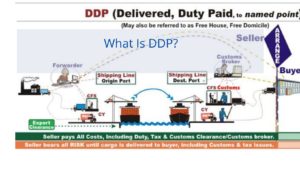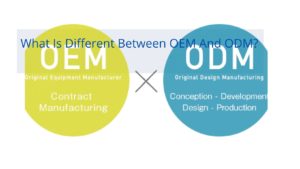Knowing the sources of supply is an essential prerequisite for effective procurement. Generally, the main sources of information are catalogues, trade journals, various advertisements, business presentations, suppliers and sales agents, the Internet, sales records, business contacts, and the purchasing department’s own records.
I. Commodity catalogues
It is well known that a supplier’s merchandise catalog, which contains information about most of the materials needed by a company, is a necessity in a well-managed purchasing office. The value of such catalogs is largely dependent on the form of presentation, which is the most out of the buyer’s control, where items are ready and readily available, and where the information is used. Advances in online price list management continue to make it less difficult to use and improve the form of product presentation. Distributors’ catalogs range from a wide variety of manufacturing sources and their quotations, to catalogs of available items in the distributor’s field. Machinery and equipment catalogs provide source product specifications and geographic information on used and new supplies.
Commodity catalogs often provide pricing information. Many items and materials are priced at standard price lists, with quotations quoted at a discount. Catalogs are also often important reference books for department managers and engineers.

The validity of the materials in a catalog is a major issue, both as an index and as a document. Catalog specifications are varied, the binding is also different, not quite portable.
Corresponding directory index is important. Some companies use computer or microfilm files; some use a binder, the middle is dedicated to the catalog file archiving loose-leaf; there are card index. Indexes are generally created based on vendor or product names. In short, it should be professional, clear and easy to understand.
Online price list management is gradually being used by purchasers. The advantage of online price lists is that they can be used quickly by both buyers and internal customers, who can also customize them to include prices and various other conditions negotiated by the buyer and the seller. Managing the content of online price lists is as important as managing hard copy price lists. The management of customized price list content is a separate item from the use and management of ordinary price lists available to all purchasers.
Industry journals
Industry journals are also a source of information for potential suppliers. Of course, the list of such publications is long, and the value of the various information that appears in them varies widely. However, there are worthwhile industry journals in every field, and purchasers need to dabble extensively in reading material that is relevant to their industry as well as the procurement and supply world. Journals serve two purposes: content research, which not only adds to the buyer’s information base, but also introduces new and alternative products. Industry chatter, on the other hand, provides people with information about suppliers and their personnel. The second is advertising, and continuous familiarity with the advertisements in such publications is a good habit that all avid purchasers have self-cultivated.
Third, business presentations
Business profiles are another useful source of information, but they vary greatly in accuracy and usefulness and must be used with extra care.
A business register, or business profile, is a large book listing the addresses, number of branches, affiliations, products, etc. of a number of manufacturers, and sometimes the financial status of these businesses and their position in the industry. In addition, the book lists the trade name and the name of the manufacturer, and classifies the materials, supplies, equipment, and other items for sale, with the name and address of the source of supply under each item.
The Business Register does a good job of indexing the categories, and can be found either by trade name, manufacturer’s name, or by trademark name. There are a number of such standard business descriptions, which are not necessarily technical but are useful. Phone number in this Yellow Pages provides a directory of local suppliers.
Fourth, suppliers and sales agents introduced enterprises have their own more regular suppliers, these more stable relationships with suppliers will naturally strive to meet some of the requirements of the enterprise, so that you can reduce the evaluation of new suppliers of time and resources used. But this also has a negative effect, if the search for a source of supply products and the same or alternative to the current supplier, the current supplier fears that the introduction of a new supplier will be a threat to him, and become his competitors.
A large part of the sales and marketing information received by the firm comes from sales agents. Therefore, these sales agents are also likely to be an important source of information for the new supplier, especially when there is an urgent need, in order to protect their interests, but also will try to provide new suppliers.

V. Sales Representatives
Sales reps are probably one of the most valuable sources of information a company can access, providing references to sources of supply, product models, commercial information, and so on. A savvy buyer is bound to pay as much attention to sales reps as possible without compromising other tasks. Developing a good supplier relationship is important, and it often starts with being friendly, humble, empathetic, and honest with the supplier salesperson. Purchasing companies can’t afford to waste any bit of time. After the visit, make a note of the phone call with the new information obtained. Some buyers visit all sales reps who come into the office on a personal basis, while others are unable to do so due to lack of time or other work pressures, but they also make sure that every visitor is received without making them feel snubbed or rejected.
VI. Internet
The Internet is a powerful search facility that provides a wealth of information. Increasingly, businesses are using the Internet to help locate potential suppliers who may meet the criteria for further evaluation. After collecting information on potential suppliers, the purchasing manager must begin to thoroughly sift and consolidate the information, a difficult task that relies on the quantity and quality of the information already available.







